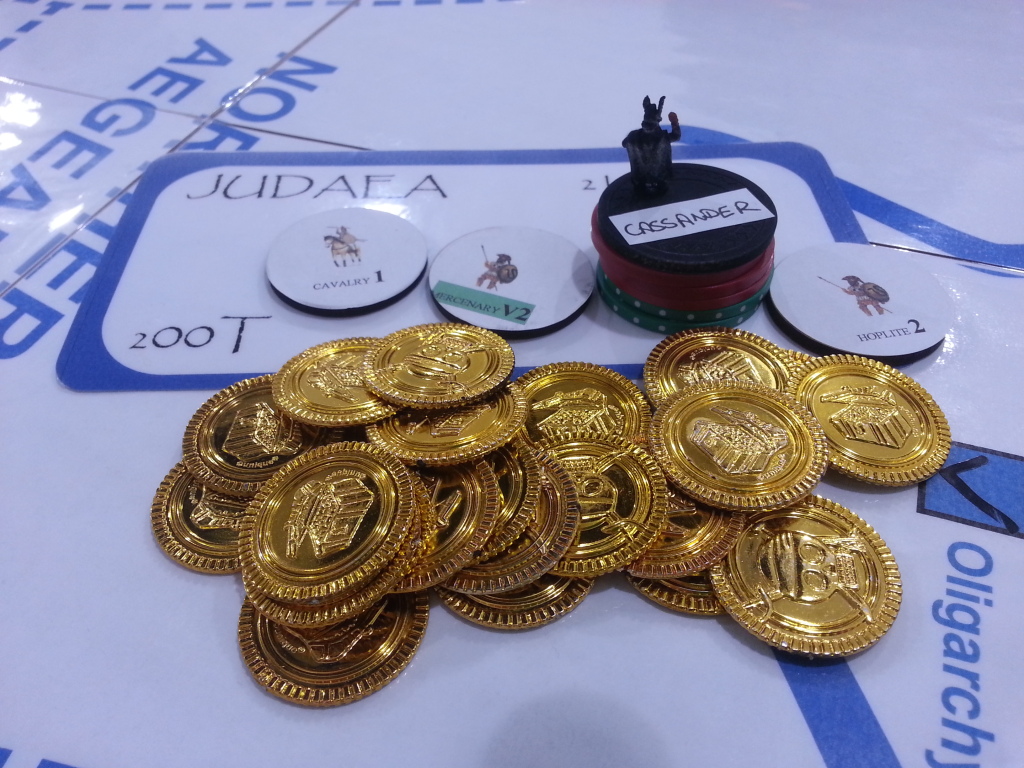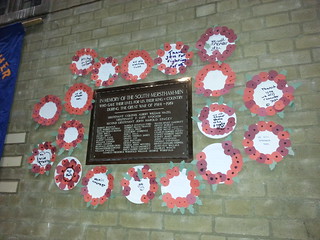This is the second part of my offside report on the Megagame Makers megagame ‘Funeral Games II’ which I played in on Saturday. It covered the period following Alexander the Great’s death and the struggle by his successors to attain power. In the first half of the game I played Antipater, until he died of old age in his bed, then I played his heir, Cassander.
Cassander
This afforded me a moment to breathe. I was reincarnated as Cassander, my heir. As it turns out Perdiccas got killed and he became my younger brother Alexarchus. Another player also got reassigned then too and played the middle brother Pleistarchus. We had a short breather and plotted how to establish ourselves as powerful, the downfall of Queen Olympias and the rebuilding of Thebes.
Cassander”s Objectives
- Gain control of Macedonia
- Expand your power base in Europe as widely as possible
- Eliminate Olympias and Alexander the Great”s surviving family when the time is right
- Sideline Eurydike and the half wit King Philip III (both dead already)
- Rebuild Thebes as a snub to Alexander”s memory
What Cassander Did
Stage one was get some money and some troops. None of the European Macedonians wanted to reward or use Antipater’s heirs. So I took an opportunity to go to Egypt to see Ptolemy who was an enemy of Olympias and had managed to be declared a rebel twice over. He had enough loyal Macedonians with him to be able to hold his own rival Assembly and overturn those decrees.
I discussed my plans with Ptolemy and he agreed to legitimise it if I was successful, but not in advance. That was good enough for me.
Ptolemy made me governor of the province of Judea. This gave me some regular income and somewhere to raise troops. My brothers also managed to gain a fleet (Pleistarchus) and some mercenaries (Alexarchus). I also negotiated with the Greek city states on our project to restore Thebes, and unknown to me Alexarchus was doing the same with Seleucus. I returned to Boeotia having secured funding from the Oligarchs and also permission to raise troops from Demosthenes. At the same time the European armies were preparing to go to Egypt to fight Ptolemy. So I spent some time encouraging this, especially from those that I thought were loyal to Queen Olympias. I spoke to my brothers in law Autodicus and Sippas to try and persuade them to stay in Pella.
In the Spring I rebuilt Thebes with funding from Seleucus that Alexarchus had brokered. I had also got funding from the Greek oligarchs and permission from the Democrats to raise troops in Greece. This gave me a force in Europe and also enough funding to be able to bribe any troops left behind either to join me or to stay out of the fight. All I needed to do was be patient and wait for the fleet to take the army away in the Summer.
As soon as the army sailed for Egypt I was left with the largest force in Europe supported by my two brothers and with three thousand talents to bribe the troops remaining with my brother in law Sippas. As it happened Sippas agreed to join us and we had an uncontested Palace Coup. I immediately had Queen Olympias killed but Cleopatra narrowly escaped before I could do the same to her. I took control of the young King Alexander IV in the hope of gaining legitimacy as his guardian and also showing that I was acting in the best interests of the royal line (if not of some of its members specifically).
We had a brief conversation, but didn’t have enough Macedonian troops to form an assembly. Although we had control of Macedonia we couldn’t call out the levies to ratify our actions. Pro-tem I made myself Regent of Europe, Pleistarchus Governor of Macedonia and Alexarchus Governor of Thrace. I also made Sippas Strategos of Europe. All of this would only stick if others agreed. I was a little surprised when the fleet returned the Army at the end of the Autumn, as soon as they’d heard the news they’d abandoned fighting Ptolemy and returned to Macedon.
First on the scene was Autodicus, another of my brothers in law. As there was time for a storming of Pellas I rapidly negotiated with him and handed over the reigns of office as Regent of Europe to him. In return I was to be the guardian of Alexander IV. However while I negotiated Alexander’s step father sneaked into the Palace and stole the boy and his mother (Roxanne) out. Prudently I retired from Pella to Thebes ‘to ensure no misunderstandings or bloodshed’. I know a massacre waiting to happen when I see one, we were outnumbered 10:1 by the legitimate army. The main thing was that I had survived and was still in possession of my money, army and governorship. Not only that I wasn’t out of favour. Both of the remaining regents were my brothers in law and the next most powerful Macedon was an ally too, at least for now.














